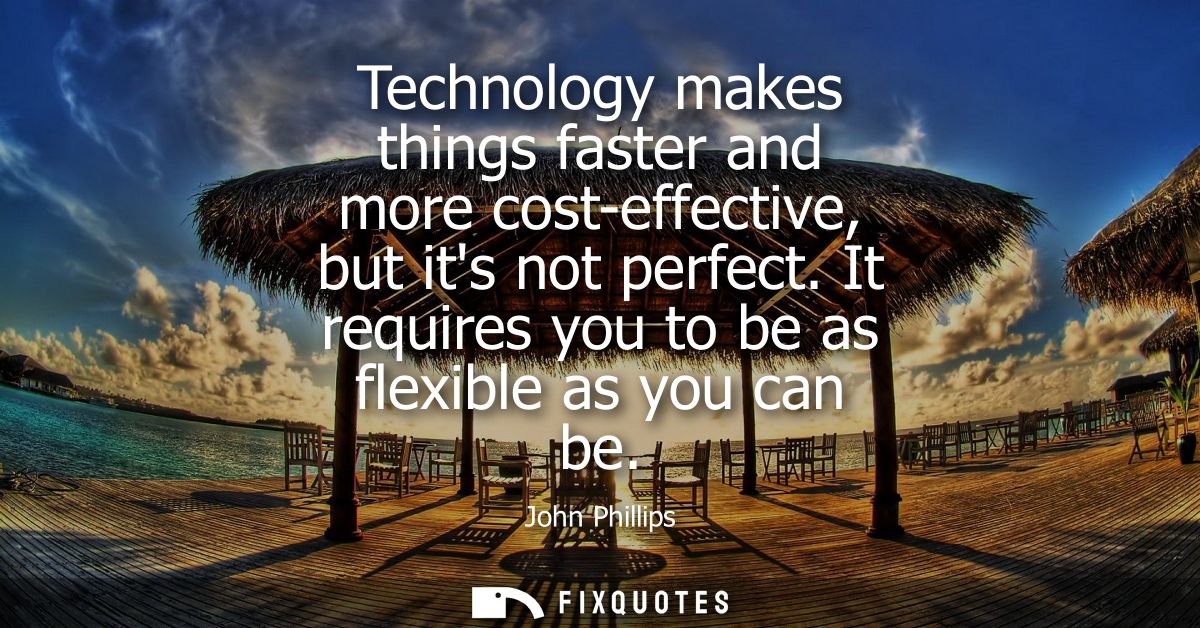"Technology makes things faster and more cost-effective, but it's not perfect. It requires you to be as flexible as you can be"
About this Quote
Technology undeniably offers significant advantages in both speed and efficiency. Tasks that once consumed hours or days can now be accomplished in moments, and routine processes are optimized to reduce the amount of time, effort, and money required. Organizations can streamline workflows, automate repetitive or dangerous operations, and serve customers around the world at a fraction of traditional costs. As a result, businesses have redefined what is possible, shattering old limits on productivity and innovation.
However, technology is not immune to its own shortcomings. Even as it accelerates progress, its imperfections and unpredictability become more apparent. Systems can crash, software can become obsolete, and data can be misinterpreted. Rapid advancements may also render skills out of date, and the sheer pace of technological evolution can create gaps in understanding among teams and users. Moreover, no automation can ever perfectly anticipate every exception or nuance in real-world applications. The migration to new systems or platforms can introduce unanticipated disruptions and costs.
This ongoing imperfection demands a mindset of adaptability. Embracing new technology without clinging rigidly to established methods enables individuals and organizations alike to benefit while staying resilient in the face of glitches or rapid change. The willingness to learn, adapt, and amend one’s approach is crucial. Flexibility involves not just tolerating new systems but actively seeking new solutions, being prepared to troubleshoot on the fly, and being open to continued education. As technology advances, it reshapes industries and roles, so responsiveness and resourcefulness become as important as technical proficiency. Ultimately, those best positioned to leverage technological innovations are not those who rely solely on the tool itself, but those who remain agile in thought and open to continual evolution, viewing technology as a dynamic partner that requires active engagement and adaptation.
More details
About the Author

